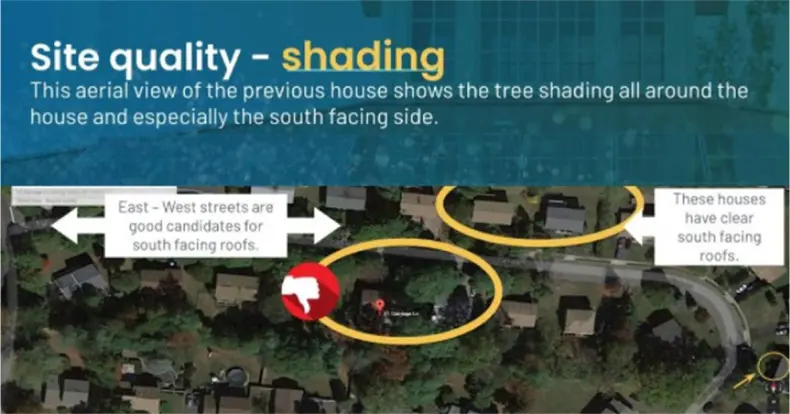
Solar Training: Home/Roof Eligibility
Roof Type
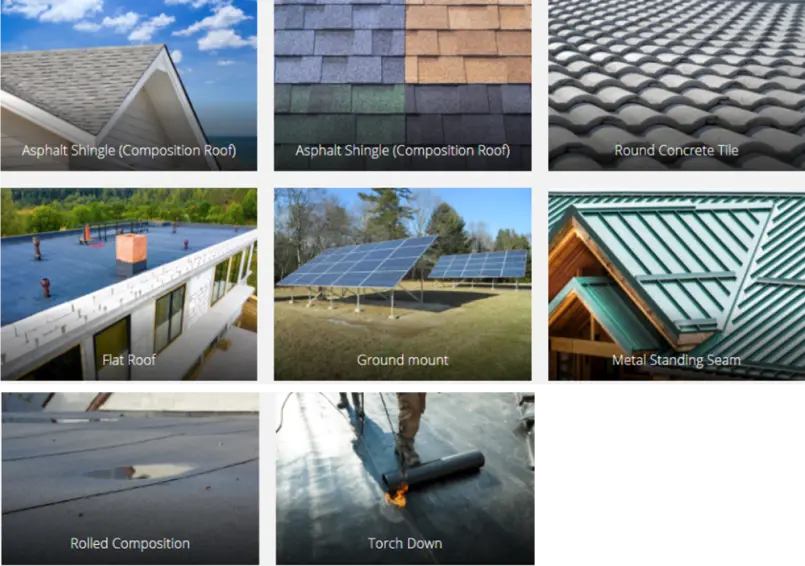
Determine If The Home Is Eligible
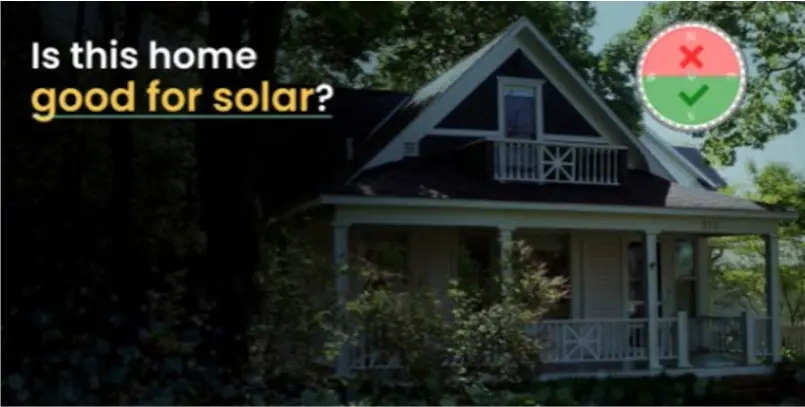
There are three things we're looking for, which help us answer that question:
- Roof orientation, size and shape
- Roof quality
- Shade over the south facing side
Do you think this house would be suitable for solar based on the requirements listed above? There are some more questions we need to ask before we can make that decision.
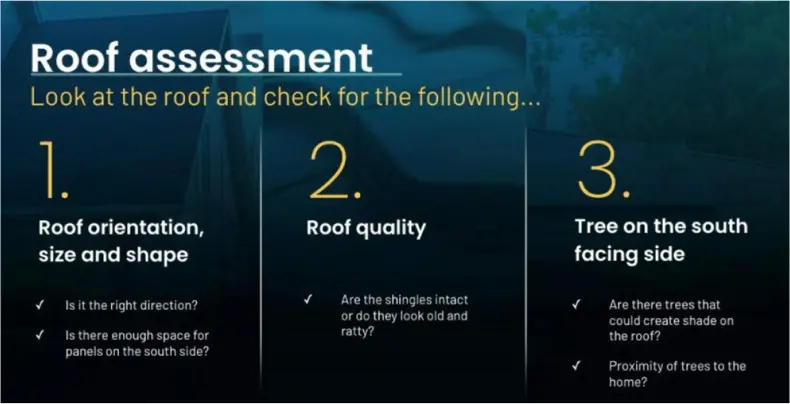
Roof orientation, size and shape
The orientation, size and shape of your roof really matters when it comes to whether solar will make sense. An ideal roof predominately faces south and should have enough space available for the panels to be laid
Check for the following:
- are there obstructions like vents or skylights that prevent panels being laid?
- does the shape of the roof make the roof planes too small for solar arrays?
- is there enough space for solar arrays when you consider codes like fire access?
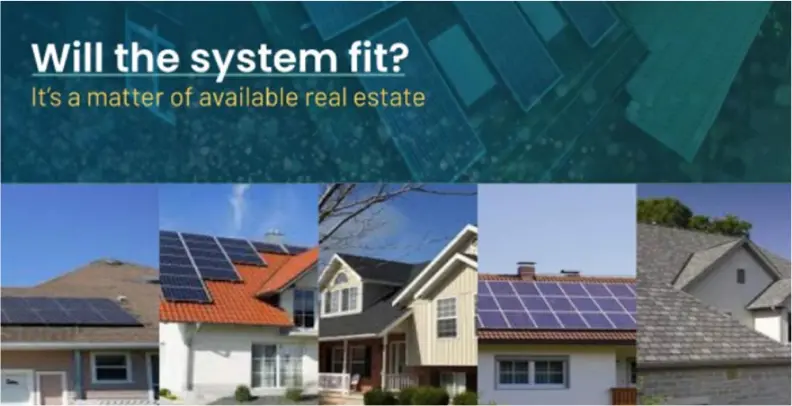
Roof quality
Are the shingles in good condition? As you can see in the images below, these shingles are not in good enough shape to support a solar system. You can get a good idea by asking the homeowner...
- how old is the current roof?
- has the roof had any issues?
- What material is the roof made of?
You can let the homeowner know that we will look at the roof in site survey if they go solar to make sure it is suitable for solar and our warranties.
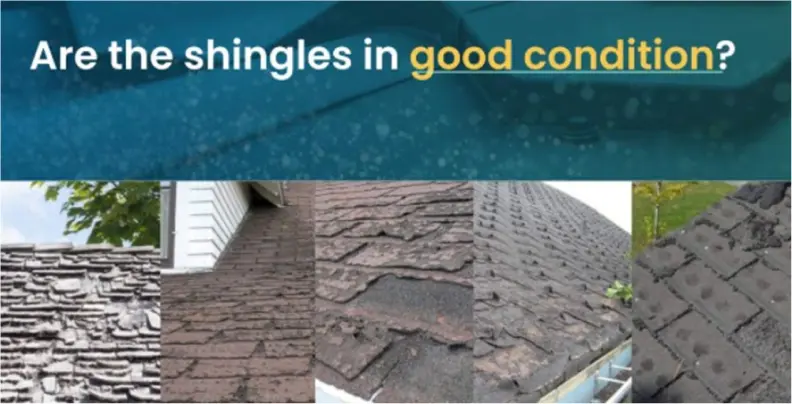
Sun access
There are lots of different reasons why even if the house is facing south, there may be obstructions that prevent adequate sunlight falling on the roof where the solar panels are installed. Obstructions that can cause shade are things like trees, other buildings, or anything that prevents the sunlight from hitting the roof. We will go through this in more detail in the next section.
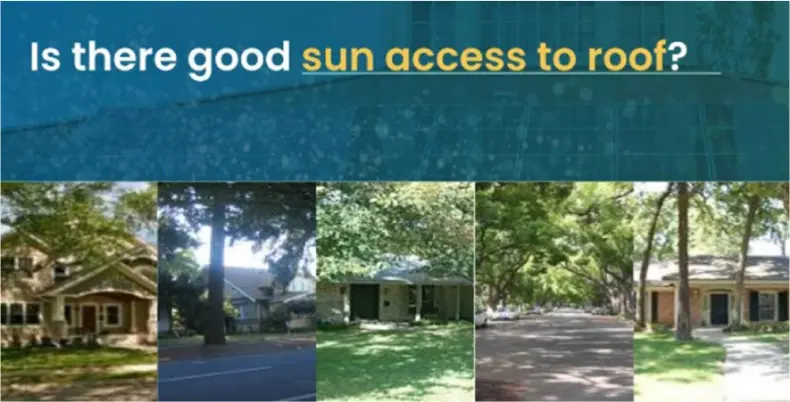
How to ensure the roof has good sun access?
Step 1: Check for shading and obstructions
Houses on streets that are going East to West, generally have a roof that faces North and South. Once you know there's a big enough area on the roof space that is facing South, you then need to look for obstructions that might affect the sun access to that side.
As you can see on this pink roof, the south facing side is clear of obstructions that could cause shade.
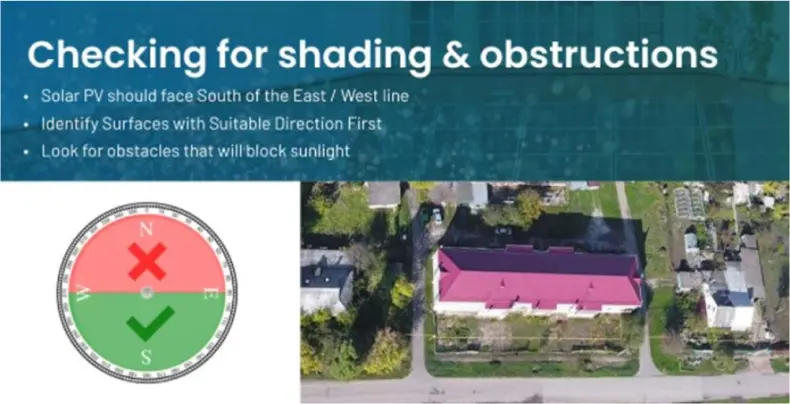
Step 2: Use the 2:1 rule of solar shading

As you can see from this diagram, to work out whether a tree or other object could be an obstruction to sun access, you need to ensure that there is enough distance between them or not.
The height of the shadow is the vertical distance between the lowest point of the solar panel, and the highest point of the object. In this case, it's 15 feet.
The horizontal distance between the object and the panels needs to be TWICE the height of the shadow - so in this case, the tree needs to be at least 30 feet away from where the solar panel sits on the roof.
Step 3: Use an aerial view to assess site quality
Sometimes it"s easiest to assess a house, or a group of houses, by looking at an aerial view. As you can see in this image, it"s easy to identify the houses with obstruction free south facing roofs. Use Google Earth - https://earth.google.com
